Winter unveils a different facet of Tibet, transforming its landscapes into a serene wonderland. In this journey through the heart of Tibet during the colder months, one discovers a unique charm that sets winter tours apart. From snow-covered monasteries to vibrant winter festivals, Tibet in winter offers an unforgettable experience.
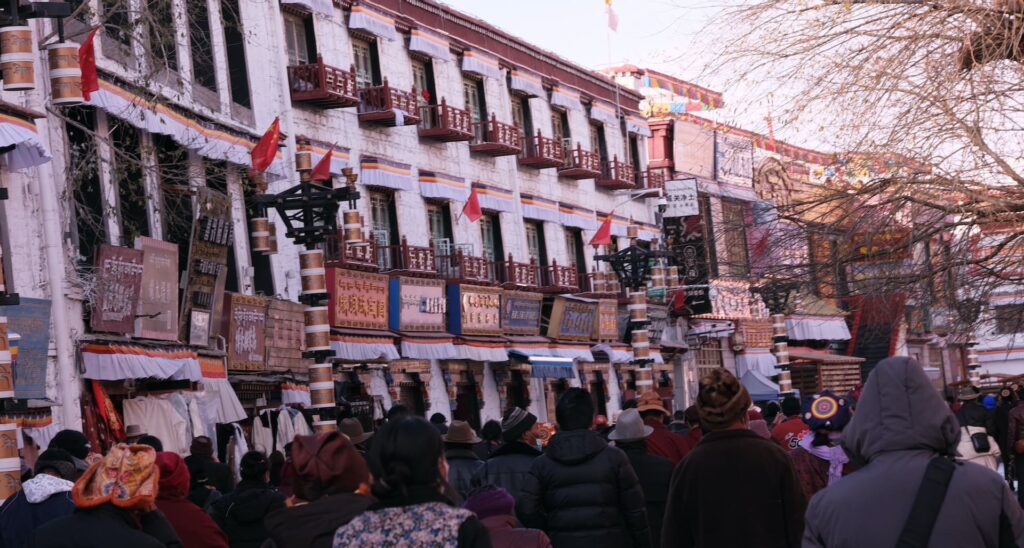
Winter Weather in Tibet
Tibet’s winter climate is characterized by crisp, clear skies and sub-zero temperatures. The majestic mountains, including the iconic Himalayas, don a blanket of snow, creating a picturesque panorama. The colder weather enhances visibility, providing travelers with breathtaking views of the region’s natural
The weather during this season is characterized by distinctive features that contribute to the unique charm of a winter tour in Tibet.
Clear Skies and Crisp Air
One of the defining characteristics of winter in Tibet is the prevalence of clear skies. The air becomes crisp and clean, providing unparalleled visibility of the majestic landscapes. The absence of heavy precipitation ensures that the views of snow-capped peaks, including the renowned Himalayas, are at their most breathtaking.
Sub-Zero Temperatures
Winter in Tibet brings sub-zero temperatures, especially during the night. While daytime temperatures can be relatively mild, travelers need to be prepared for chilly evenings and mornings. Layers of warm clothing, including insulated jackets and thermal wear, become essential to stay comfortable in the cold.
Snow-Covered Landscapes
As winter unfolds, Tibet’s rugged terrain and iconic landmarks don a pristine layer of snow. The Potala Palace, monasteries, and vast plateaus transform into a serene winter wonderland. The contrast of white against the traditional Tibetan architecture creates a visual spectacle that is both enchanting and photogenic.
High-Altitude Considerations
Tibet’s average elevation is over 4,000 meters (13,000 feet), and this becomes more pronounced during winter. Travelers need to acclimate gradually to avoid altitude-related issues. Adequate hydration, rest, and a gradual ascent are crucial components of acclimatization, ensuring a safer and more enjoyable winter journey.

Limited Precipitation
Unlike other regions experiencing heavy snowfall, Tibet’s winter is relatively dry. This lack of heavy precipitation makes travel more manageable, and the clear, dry air enhances the overall visibility of the breathtaking landscapes. Travelers need to remain hydrated due to the dry climate, and using moisturizers helps combat the effects of the dry air.
Winter Travel Advantages
While winter weather in Tibet presents certain challenges, it also offers unique advantages. The lower tourist numbers during this season mean a more intimate and peaceful experience at popular attractions. The tranquility of snow-covered landscapes, coupled with the crisp winter air, adds a layer of magic to the overall journey.
In essence, the winter weather in Tibet creates an environment of serene beauty and cultural richness. Travelers who venture to Tibet during this season are rewarded with clear vistas, spiritual experiences, and a deep connection with the unique winter allure of this enchanting region.
The Spiritual Essence of Winter
Winter holds profound spiritual significance in Tibetan culture. Monasteries, adorned in white, exude a tranquil ambiance. Pilgrims and monks engage in special winter rituals, creating a unique atmosphere of devotion amidst the snow-covered landscapes.
Festivals and Celebrations
Tibetan winters come alive with vibrant festivals, the most notable being Losar, the Tibetan New Year. Delve into the cultural richness of winter celebrations, where locals engage in traditional dances, rituals, and processions, offering a glimpse into the heart of Tibetan traditions.
Unique Winter Activities:
Winter opens doors to exclusive activities. Adventurous souls can embark on ice trekking adventures, explore the terrain on snowshoes, or opt for a memorable yak safari. With fewer tourists, winter travelers can savor a more intimate experience, forging a deeper connection with the local culture.
Yak Safaris in Snow-Covered Plateaus
Swap traditional modes of transportation for a more authentic experience by indulging in a yak safari. Traverse snow-covered plateaus and valleys atop these majestic creatures, gaining a unique perspective of Tibet’s winter landscapes. The rhythmic pace of the yaks complements the serene ambiance, creating an unforgettable winter adventure.
Winter Photography Expeditions
Capture the ethereal beauty of Tibet’s winter through a dedicated photography expedition. The clear skies, snow-clad monasteries, and the play of light on the landscapes provide photographers with a canvas of unparalleled beauty. From capturing the intricate details of architecture to freezing moments of local life, winter in Tibet is a photographer’s paradise.
Stargazing in High-Altitude Splendor
Tibet’s high-altitude locations, combined with clear winter skies, create an ideal setting for stargazing. Venture to remote areas away from urban lights to witness a breathtaking display of stars. The crisp air enhances visibility, allowing travelers to marvel at constellations and celestial wonders against the backdrop of snow-covered mountains.
Winter Festivals and Cultural Immersion
Participate in winter festivals unique to the Tibetan calendar. Witness colorful processions, traditional dances, and rituals that are deeply rooted in the region’s cultural fabric. Engaging with local communities during winter festivals provides a firsthand understanding of the spiritual and festive significance of the season.
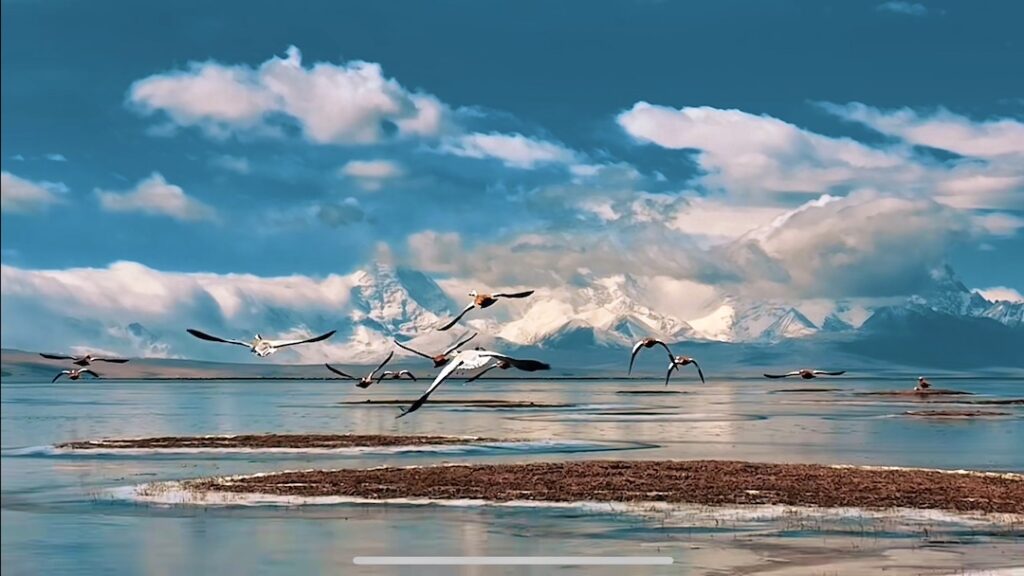
Meditation Retreats in Snowy Monasteries
Experience the tranquility of winter through meditation retreats in snow-covered monasteries. Immerse yourself in the spiritual ambiance as monks engage in winter rituals and contemplation. The serene surroundings offer an ideal setting for self-reflection and a deeper connection with Tibetan culture.
In summary, the unique winter activities in Tibet present travelers with an array of adventures, from adrenaline-pumping treks to serene moments of cultural immersion. These experiences not only showcase the diversity of winter in Tibet but also allow visitors to connect with the region on a more profound level.
Tibetan Cuisine in Winter
Warmth and comfort await in Tibetan cuisine during the colder months. Indulge in hearty winter delicacies that not only satiate the palate but also provide a cultural feast. From butter tea to savory momos, Tibetan cuisine adds a flavorful touch to the winter journey.
As the temperatures drop and snow blankets the landscapes, Tibetan winter dishes provide both sustenance and comfort, making the dining experience an integral part of the winter journey.
Butter Tea
A staple in Tibetan households, butter tea takes center stage in winter. A warm and energizing beverage made from black tea, yak butter, and salt, it provides the essential warmth needed in the chilly weather. Locals swear by its ability to combat the cold and replenish energy levels, making it a quintessential part of winter cuisine.
Thukpa (Noodle Soup)
Thukpa, a hearty noodle soup, becomes a comforting winter dish. Filled with vegetables, meat, and Tibetan spices, it warms the soul on chilly days. Variations abound, allowing travelers to savor different regional styles of this nourishing soup, often enjoyed with a side of momos (dumplings).
Tsampa
A staple in the Tibetan diet, tsampa is roasted barley flour that serves as a foundation for various dishes. During winter, it’s often mixed with butter tea or warm water to create a wholesome porridge. Nutrient-dense and easily digestible, tsampa provides sustained energy, especially appreciated in the colder months.
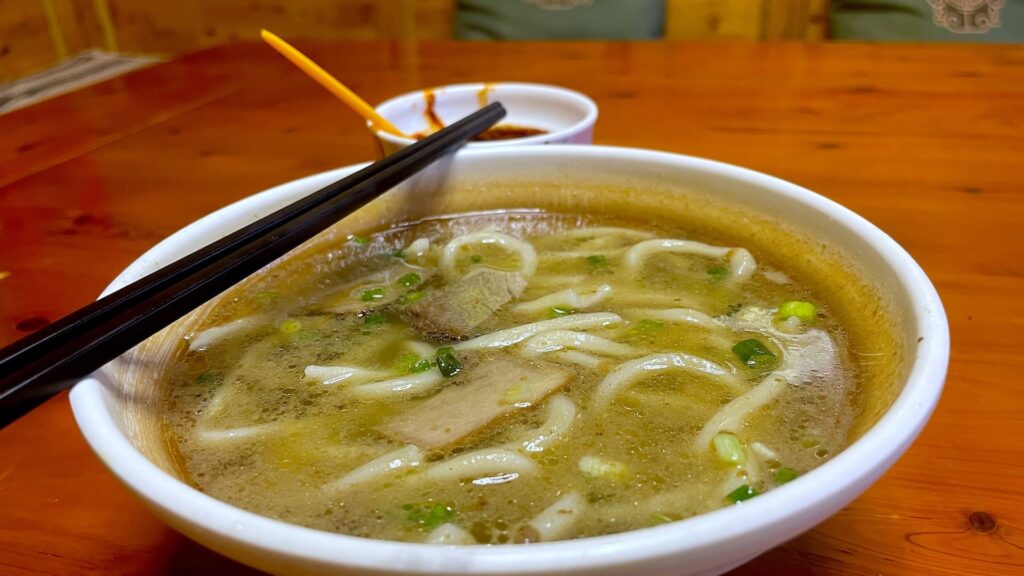
Yak Meat Dishes
Yak, a hardy mountain animal, is a significant part of Tibetan cuisine. In winter, yak meat dishes take precedence. Whether it’s yak stew, grilled yak skewers, or hearty yak soups, these dishes provide both sustenance and a taste of the region’s traditional flavors amid the winter chill.
Tibetan Bread (Balep Korkun)
A dense and hearty bread, bales korkun, become a dietary staple in winter. Made from barley flour, it’s often enjoyed with butter or cheese, offering a warm and filling accompaniment to winter meals. The simplicity of Tibetan bread adds to its charm, making it a delightful part of winter cuisine.
Tibetan Dumplings (Momos)
Momos, filled with meat or vegetables and wrapped in dough, is a beloved Tibetan delicacy that transcends seasons. However, during winter, these steamed or fried dumplings offer a comforting and warm treat. Served with spicy dipping sauces, momos add a flavorful touch to winter dining experiences.
Sweet Rice with Dried Fruits (Dasey)
Dasey, a dessert made from sweet rice and dried fruits, adds a touch of sweetness to winter meals. Whether enjoyed as a snack or dessert, Dasey provides a delightful contrast to the heartier savory dishes, completing the winter culinary experience on a sweet note.
Tibetan cuisine in winter is a celebration of robust flavors, nourishing ingredients, and cultural traditions. From warming beverages to hearty staples, the winter dishes of Tibet not only satisfy the appetite but also contribute to the overall sensory richness of a winter journey in this enchanting region.
Practical Tips for Winter Travel
Preparing for a winter tour in Tibet requires careful consideration. Share essential tips, covering clothing suitable for the chilly climate, precautions against altitude sickness, and insights into navigating transportation challenges. Equipping travelers with this knowledge ensures a smooth and enjoyable winter expedition.
Recommended Tibet tour Winter Itinerary
Propose a captivating itinerary, guiding travelers through winter wonderlands like Lhasa, Shigatse, and the sacred Mount Kailash. Each destination offers a blend of cultural immersion and awe-inspiring landscapes, creating a holistic winter experience.
1. Lhasa Retreat (7 Days)
Day 1-2: Arrive in Lhasa, and explore Potala Palace, Jokhang Temple, and Barkhor Street.
Day 3-4: Visit Drepung and Sera Monasteries, and experience traditional winter rituals.
Day 5: Journey to Namtso Lake for breathtaking winter scenery.
Day 6-7: Explore local markets and indulge in winter festivities in Lhasa.
2. Shigatse Winter Expedition (8 Days)
Day 1-2 Start in Lhasa, and visit Potala Palace and Jokhang Temple.
Day 3: Travel to Gyantse, explore Pelkor Chode Monastery and Kumbum Stupa.
Day 4: Continue to Shigatse, and visit Tashilhunpo Monastery.
Day 5-6: Explore local markets and experience winter traditions.
Day 7: Journey back to Lhasa.
Day 8: Departure or optional visit to nearby winter landscapes.
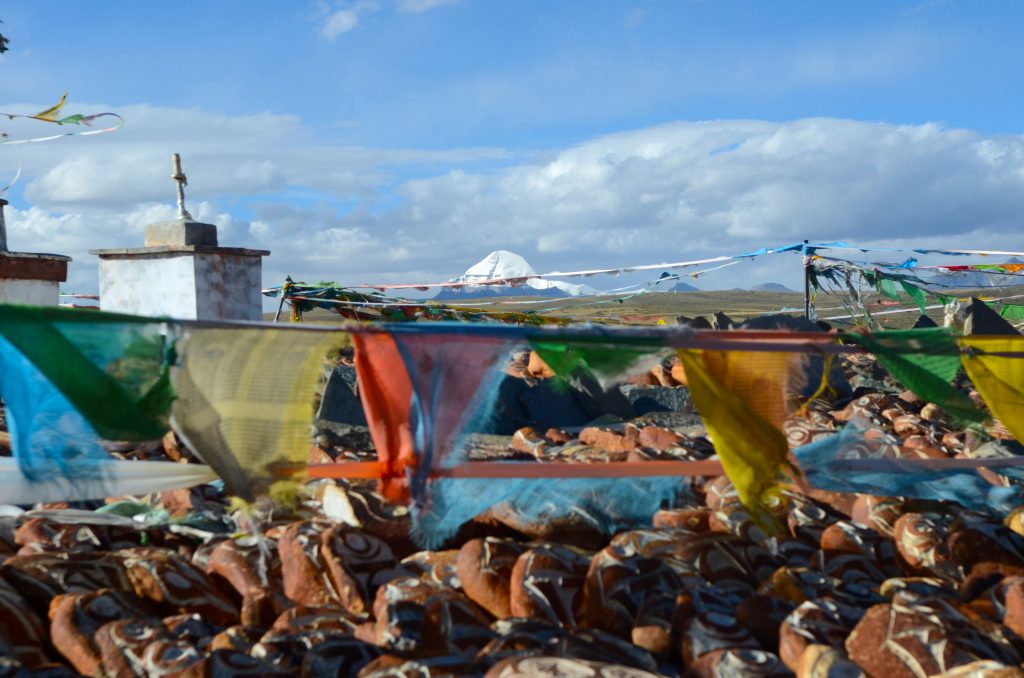
3. Mount Kailash Winter Pilgrimage (10 Days)
Day 1-3: Begin in Lhasa, and acclimate to the altitude.
Day 4-5: Travel to Darchen, the starting point for the Mount Kailash trek.
Day 6-8: Trek around Mount Kailash, experiencing the winter majesty.
Day 9: Return to Darchen and explore nearby winter landscapes.
Day 10: Departure or extension to nearby winter destinations.
4. Winter Wonderland in Nyingchi (6 Days)
Day 1-2: Arrive in Nyingchi, and explore the Yarlung Tsangpo Grand Canyon.
Day 3: Visit the Basum Lake, known for its winter tranquility.
Day 4-5: Explore the quaint town of Bayi and its winter markets.
Day 6: Departure or optional extension to nearby winter destinations.
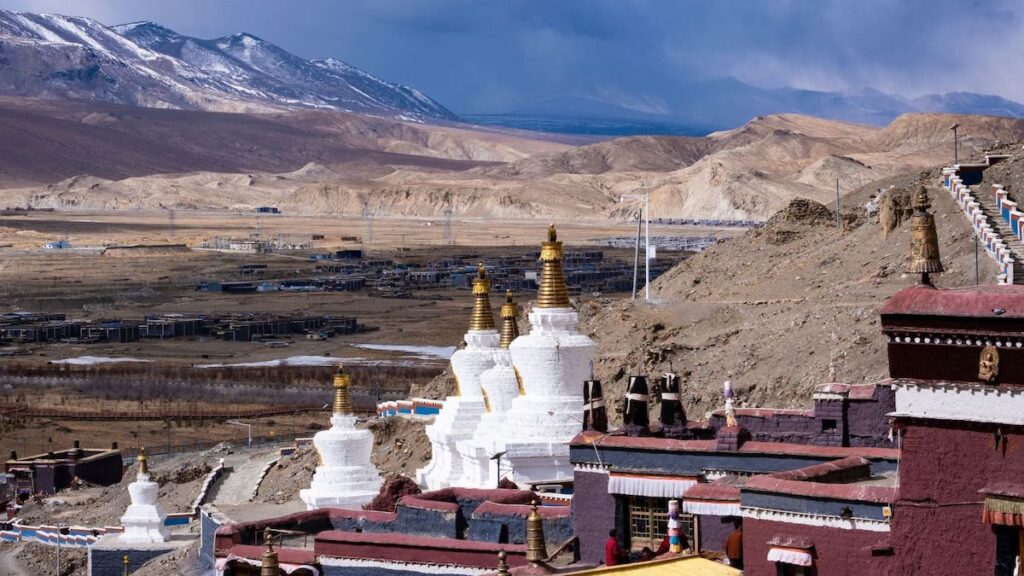
5. Tibet Highlights with a Winter Twist (12 Days)
Day 1-4: Start in Lhasa, and visit major attractions.
Day 5-8: Journey through Shigatse, Gyantse, and explore winter landscapes.
Day 9-10: Experience winter festivities and traditions in local towns.
Day 11-12: Explore Namtso Lake and conclude the journey in Lhasa.
These itineraries offer a mix of cultural immersion, breathtaking landscapes, and the unique charm that winter brings to Tibet. Adjustments can be made based on individual preferences and the duration of the trip.
Conclusion
As the winter winds gently sweep through Tibet, they carry with them an enchanting tale of serenity and cultural richness. Encourage readers to embark on this winter journey, where the landscapes are draped in snow, and the spirit of Tibet comes alive in a truly magical way.
